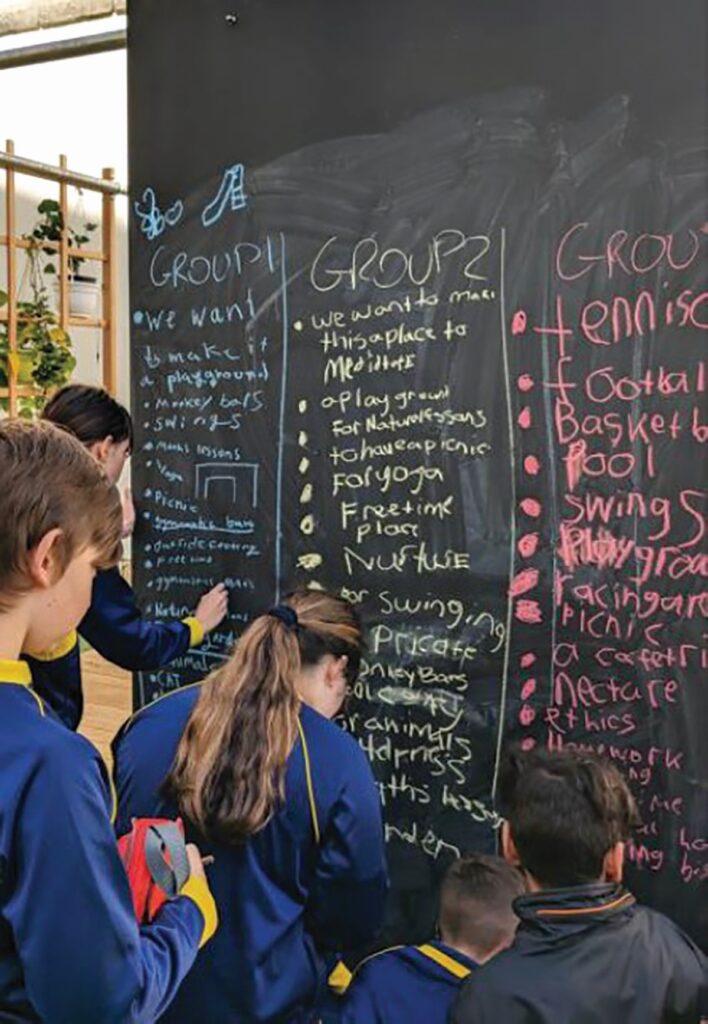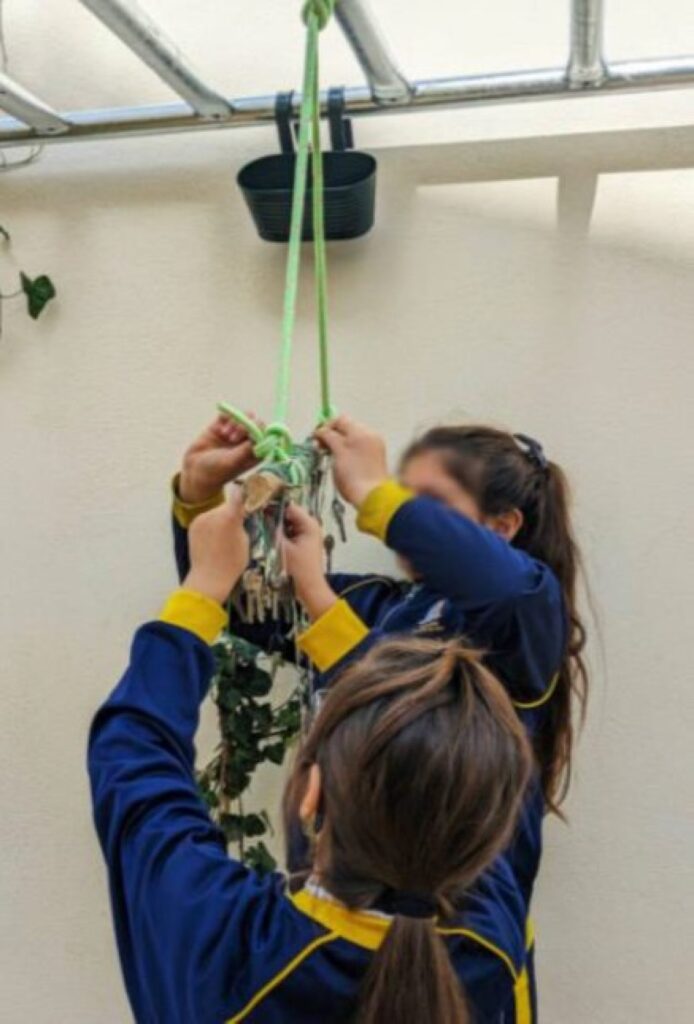St Clare primary school, Gżira, recently acquired a new, outdoor learning space in its school yard to help encourage more play and creative expression.
The cubic structure, inspired by the ideas of Dutch architect Aldo van Eyck, offers various opportunities for children to play, create and learn. Research shows that play areas can stimulate a child’s creative growth.
The installation forms part of the project ‘School Playscapes – Innovative Learning Approaches Through Play’, which was funded through Arts Council Malta’s Arts Education Scheme. The project is part of a larger EU-funded project called Varcities, in which a team from the University of Malta is coordinating interventions in Gżira with the support of the Gżira local council.
The structure at St Clare is the culmination of a series of activities that engaged schoolchildren in creative and playful participatory workshops. Data was collected during these workshops to identify the needs and ideas of children, teachers and parents, which were then integrated in the design of the school playscape.

The result is an outdoor mixed-use structure which was conceptualised and designed with the support of artist Laura Besançon, who has done extensive research on play spaces and their benefits, and Tom van Malderen, who designed the outdoor furniture, together with Kurt Calleja, Emma Clarke, Edward Duca, Daniel Micallef, Antione Gatt and Daniela Quacinella, who form part of the University of Malta Varcities team.
The cube, which is the first intervention within the inner school yard, is of an open nature, allowing the pupils to use it in many different ways. Moreover, its modular concept enables the pupils and teachers to modify the structure over time, and claim it as their own.
Furthermore, it provides a blank canvas for the schoolchildren to play and explore their environment in new ways. Instead of using structures that predefine how children should learn or play, its minimalistic design offers opportunities for diverse activities and can be interacted with in multiple ways.
It has an integrated blackboard for writing and drawing on, and a room-like classroom extension that facilitates educational activities. Its modular composition makes playing and greening possible, and aims to stimulate creative learning in both educators and learners in multiple ways.

In February, a day of activities was held to introduce the new mixed-use structure. It was opened by Nikki Petroni, a representative from Arts Council Malta, and Gżira mayor Conrad Borg Manché, who also spoke and interacted with the schoolchildren.
The inauguration proceeded with activities for all the pupils. These included co-implementation workshops in and around the structure, which involved both the teachers and pupils, in order for them to discover the new structure and its concept, and make it their own.
Pupils also participated in propagation stations, mixed media workshops from reclaimed and upcycled materials and scientific experiments that brought the cubic structure to life and showcased its potential.
More greening interventions will be carried out at the school until the end of the Varcities implementation phase.
The School Playscapes project is funded by the Arts Council Malta through its Arts Education Scheme. It is implemented in collaboration with the Varcities project, which is funded by the EU’s Horizon 2020 Research and Innovation programme. Varcities aims to implement real, visionary ideas, adding value by establishing sustainable models for increasing the health and well-being of citizens who are exposed to diverse climatic conditions and challenges in and around Europe. It involves 25 institutions from 10 countries, including the University of Malta. The project is supported by Arts Council Malta.
For more education-related articles, check out this link. For more Child articles, click here.










